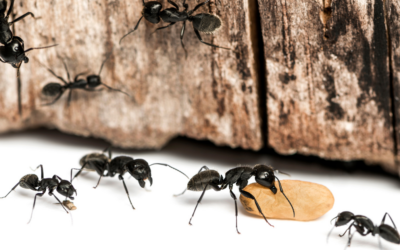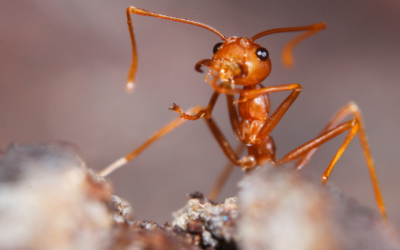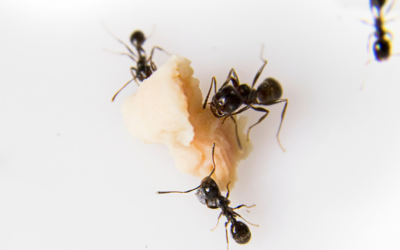Come with us as we explore the mysteries of ants. We’ll look at their characteristics, behaviors, and how to handle infestations.
Meet the Argentine Ants
The tiny ants commonly found in Central Texas are often identified as Argentine ants. These ants are typically small in size, measuring about 1/16 to 1/8 inch in length. They feature a slender body structure and vary in color from light to dark brown. While individually inconspicuous, these ants make up for their size with their vast numbers and organized colonies.
Characteristics of Argentine Ants
- Appearance: The ants have a distinct appearance, characterized by their small size and slender bodies. They possess segmented bodies consisting of a head, thorax, and abdomen. Their antennae are bent, with a distinct elbow-like joint.
- Colony Structure: Unlike many other ant species, Argentine ants have a unique colony structure. They form massive supercolonies comprising interconnected nests, which can stretch for miles. These supercolonies consist of numerous queens and a massive number of worker ants.
Habits and Behaviors of Argentine Ants
- Foraging Patterns: Argentine ants are highly adaptable foragers, exploring their surroundings in search of food sources. They are attracted to sugary substances, such as nectar and honeydew produced by aphids. This preference for sweets often leads them to invade homes, particularly in kitchen and pantry areas.
- Supercolonies: Argentine ants are known for their cooperative behavior within supercolonies. Unlike many other ant species, they do not exhibit territorial aggression between colonies. Instead, they work together, creating expansive networks of nests that share resources and cooperate in their foraging activities.
- Environmental Adaptability: Argentine ants thrive in a range of environments and can adapt to various conditions. They are particularly successful in urban areas due to their ability to exploit food resources and navigate human-made structures.
Dealing with Argentine Ant Infestations
- Sanitation and Food Storage: Maintain cleanliness in your living spaces and eliminate potential food sources that attract Argentine ants. Clean up spills promptly, store food in tightly sealed containers, and regularly dispose of garbage.
- Seal Entry Points: Inspect your property for cracks, gaps, and openings that serve as entry points for ants. Seal these openings with caulk or other appropriate sealants to prevent their access.
- Limit Moisture: Argentine ants are attracted to moisture. Fix any leaks or sources of excessive moisture in your home to minimize their appeal.
- If you have difficulty controlling Argentine ant infestations, consider hiring a professional pest control service. They can help you get rid of the problem. They can provide effective treatment strategies tailored to your specific situation.
Exterminate Tiny Ants
Tiny ants in Central Texas, identified as Argentine ants, bring a unique presence to the region. Despite their small size, they form vast supercolonies, displaying cooperative behavior and adaptability. Understanding their characteristics, foraging patterns, and colony structure is crucial for dealing with potential infestations.
By practicing good sanitation, sealing entry points, and addressing moisture issues, you can mitigate the risk of Argentine ant invasions.
Schedule a Free inspection with 855Bugs to ensure effective management and long-term prevention. Stay vigilant and maintain a pest-free environment to protect your home from these fascinating yet potentially bothersome tiny ants.




